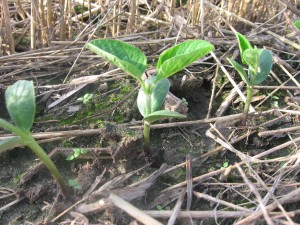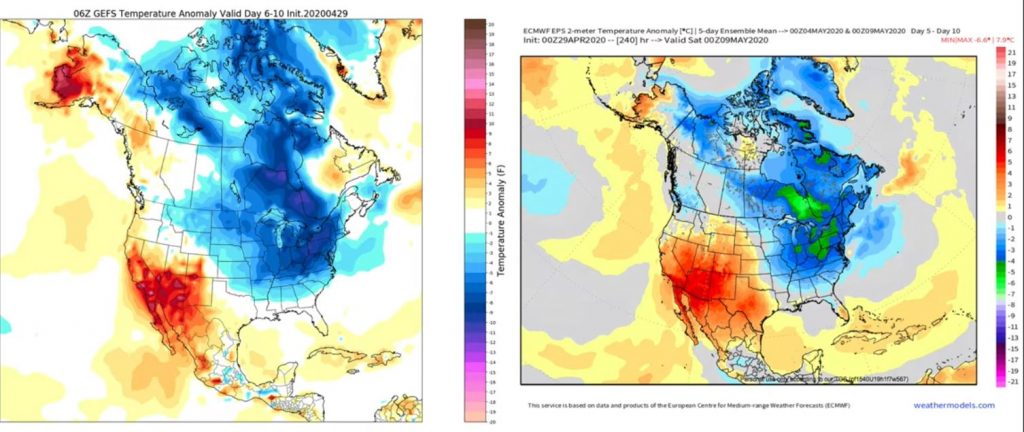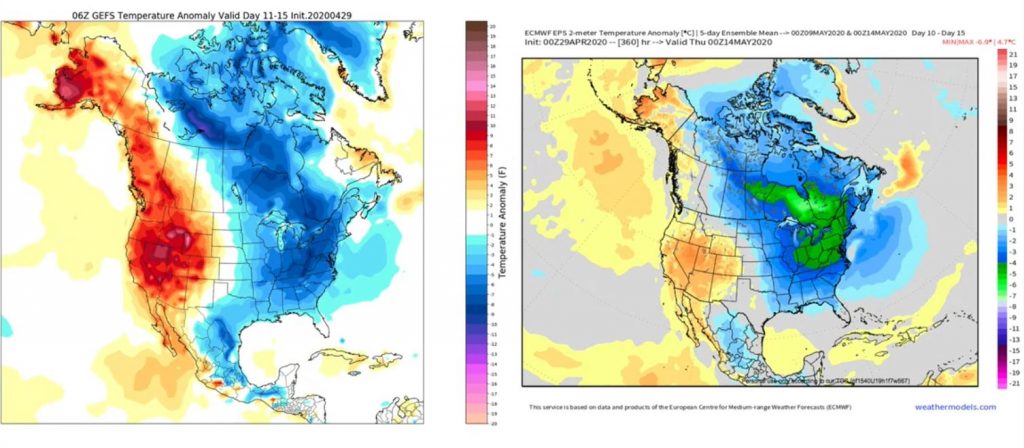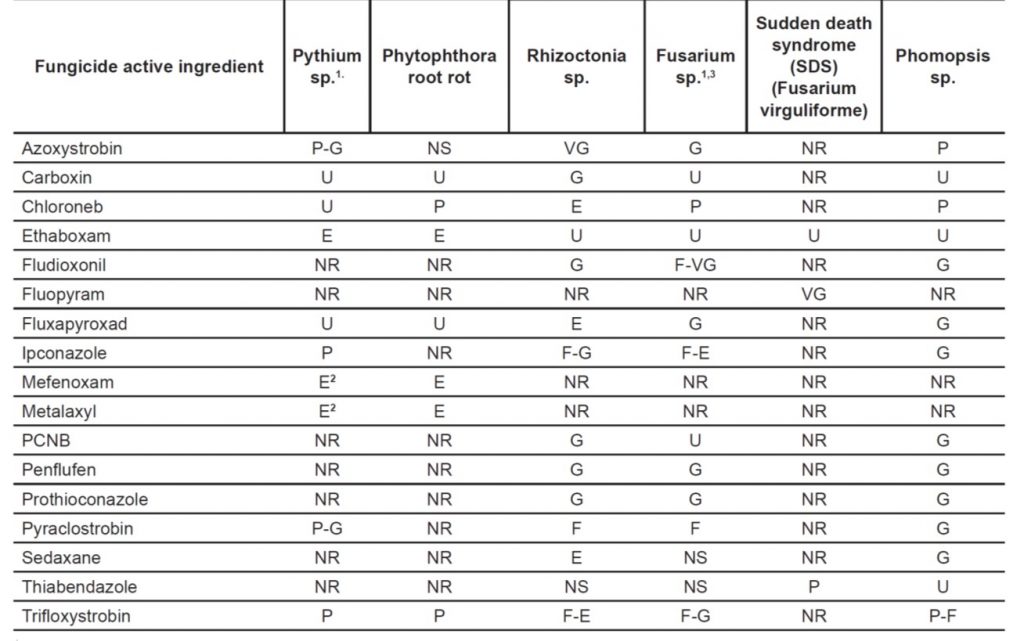The weather reports of near-freezing temperatures in some parts of Virginia has many concerned about their wheat, corn, emerged and non-emerged soybean. I’m one of them, but we must try to be optimistic about this threat.
My weather apps seem to indicate lows in the lower 30’s in some of most northern and western growing areas on Friday and Saturday nights. This is never good, especially in May. A frost may burn off some leaves if the air remains calm, but a slight breeze during the night can keep the air temperature surrounding the plants above freezing, and in-turn the soybean plant above freezing. And as long as the temperatures don’t drop below freezing for an extended period of time, I think that our soybean will be O.K.
Why do I say this? Usually, it will take air temperatures of 28 F or less to cause permanent damage. Why is this? First, the soil temperatures are warm, in the 50’s and 60’s and the soil will not warm as fast as the air. The air nearest to the soil won’t be as cold due to this; there will be a buffer area. Even if temperatures do get down to 31-32 F, plant cells will not freeze because they contain solutes, which lowers the freezing point of the tissues. For a more thorough explanation of freeze damage to soybean, I recommend this article on the University of Wisconsin’s Cool Bean website.
Just in case, we do have some soybean damage, Purdue University has an excellent article on the subject for corn and soybean, Symptoms of Low Temperature Injury to Corn and Soybean, which include some good photos of injury. The photos show likely seedling soybean survival and death examples. If our soybean have several leaves (V1-V2) and there are some out there, it’ll take very cold temperature to freeze the entire plant. Even if frost burns the leaves off, the growing points in the nodes of these leaves will likely survive and regenerate a new stem, leading to a bushier but healthy plant. But, we can worry about that next week.
The seed that are in the ground will survive. Again, the soil temperature will not drop dramatically with the cold weather. Still, soil temperatures in the 50’s is not warm. You’ll need a fungicide seed treatment protecting them. No seed treatment? We will have to wait and see. For more details, see my last article, Soybean Planting Tips for Cool Weather
Should you stop planting? We are not. I have a planter in the field today. But my seed are treated with a fungicide. But neither do you need to be in such a hurry. We generally don’t see a drastic yield decrease until planting is delayed after June.




